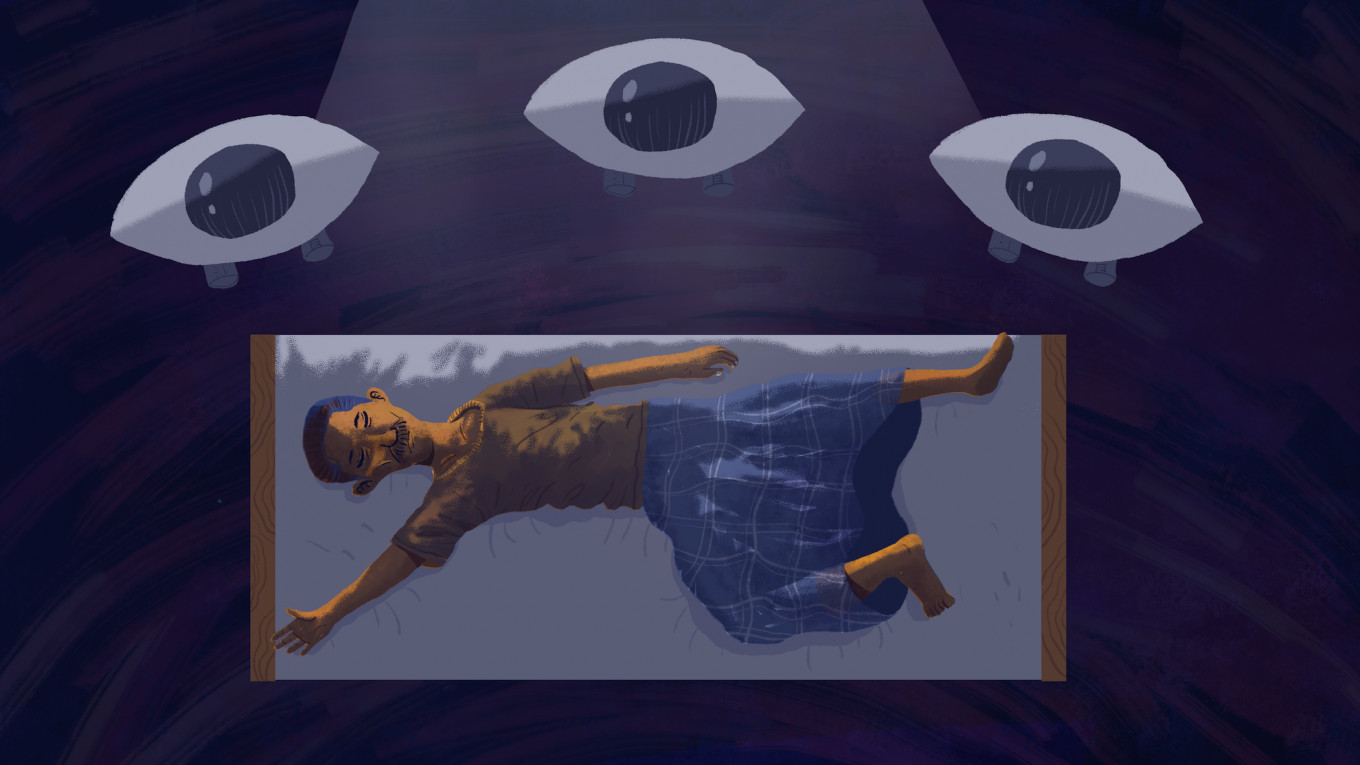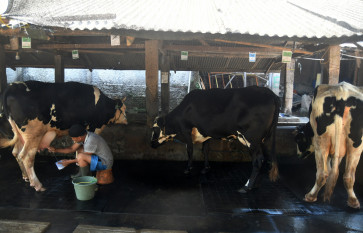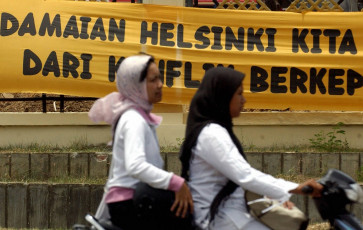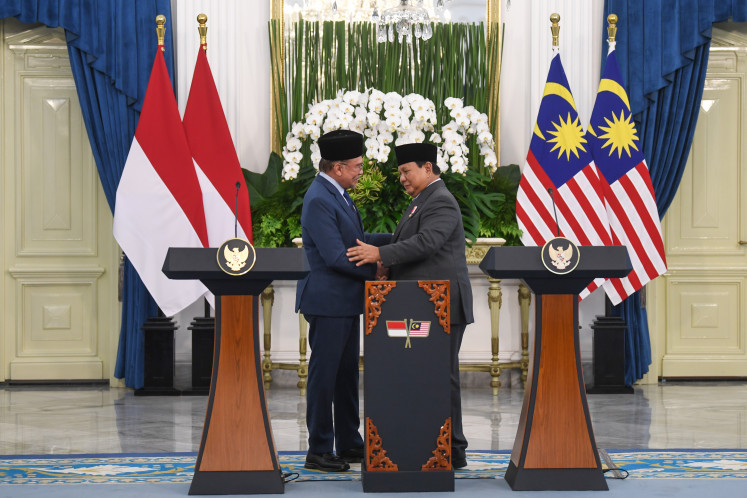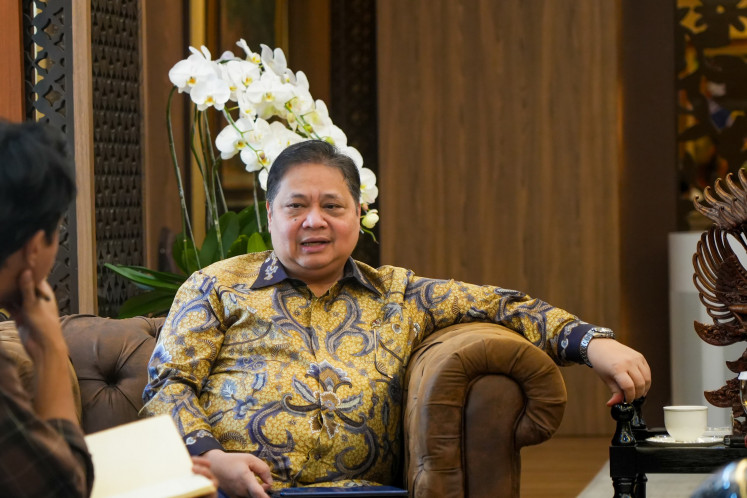Popular Reads
Top Results
Can't find what you're looking for?
View all search resultsPopular Reads
Top Results
Can't find what you're looking for?
View all search resultsSpeaking out: Addressing past human rights violations in Aceh and Timor-Leste
Asia Justice and Rights recently launched two animated documentary shorts, “Konta-Sai” and “8:45”, giving two survivors the chance to speak out.
Change text size
Gift Premium Articles
to Anyone
“One day, around 11 in the morning, a commander of the armed group came into the house and threatened the aunties to keep silent. And the commander raped me. I was afraid. I cried, but I couldn’t make any sound.”
These are the words of Maria Isabel, a survivor of sexual violence in Timor Leste, and the first sentences of the animated documentary short “Konta-Sai” (Speak Out), one of two films commissioned by Jakarta-based non-profit organization Asia Justice and Rights (AJAR) as part of a project called Making the Right to Truth Tangible.
In close collaboration with the Aceh branch of the Commission for Missing Persons and the Victims of Violence (KontraS Aceh) and Asosiasaun Chega! Ba Ita (ACbit) in Timor-Leste, AJAR aims to document the stories of survivors, facilitate dialogue and engage with local authorities to address past human rights violations.
“It is our moral obligation to continue recognizing and acknowledging the survivors and to help them achieve truth and justice,” said Indria Fernida, regional program coordinator for AJAR. “We still have a long way to go, but I believe we are walking on the right path. Through the animation, we wanted to describe a difficult situation in a way that was easily understandable, so it could perhaps encourage the younger generation to follow and not forget the issue, as well and preserve the memory.”
Maria Isabel, usually referred to as Mana Isa, is one of thousands of East Timorese women who were tortured and raped by Indonesian security forces during the Indonesian invasion and occupation of Timor-Leste (1975-1999).
This period was also marked by other human rights violations. Estimates say that more than 100,000 East Timorese died during the occupation. It was only in August 1999, under former president Bacharuddin Jusuf Habibie, that the government held a referendum and a majority in Timor-Leste voted to form an independent and sovereign country.
A still from "8:45". The film focuses on a survivor of the Aceh conflict. (AJAR/Courtesy of AJAR and KontraS Aceh)In 2004, Mana Isa attended a hearing held by the CAVR Commission for Reception, Truth and Reconciliation in Timor-Leste.
“I heard testimonies from women who had experienced sexual violence during the war,” she says in the film. “My heart broke as I listened to them speak, as it reminded me of my own experiences from the past. I did not have the courage to speak like they did in public.”
But after participating in the activities of the victims’ association and AcBit, which brought together victims from several districts, Mana Isa eventually felt she had the courage to share her own story.
“Hearing them speak about their experiences motivated me to speak about mine,” she adds. “At least for the young people, they can feel proud to acknowledge the suffering their mothers endured to gain independence.”
In the second documentary produced by AJAR, “8:45”, Pak Umar shares his story. A survivor of the Aceh conflict, Pak Umar was arrested by military forces who accused him of being a member of the Free Aceh Movement (GAM). For over a month, he was held and tortured.
The conflict between the Indonesian government and the GAM began in the mid 1970s and resulted in 10,000 to 30,000 deaths, mainly of civilians. When a tsunami hit Aceh in late 2004, between 150,000 and 170,000 people were killed, and the armed conflict came to a natural stop. In the aftermath of the natural disaster, a memorandum of understanding was signed between the government and the GAM, paving the way for peace efforts in the region, including the formation of the Aceh Truth and Reconciliation Commission (KKR), which aims to resolve human rights violations from the conflict and obtain restitution for the victims.
“Following the public hearings, I was relieved that I could convey the facts about what had happened to us,” Pak Umar says in the short film. “We [the victims] felt relieved and vindicated after giving our testimonies. Since torture weakened me physically, it was hard for me to find a job. I hope that the government will pay more attention to our social and economic situation in the future.”
Director Kartika Pratiwi said the documentaries would help encourage survivors to speak out about their experiences and would provide an opportunity for self-reflection and mutual support for action. Survivors, she added, could become active agents of change.
She used the same approach in her award-winning 2019 short animation “A Daughter’s Memory”, which tells the story of a woman whose father was a victim of the Indonesian mass killings of 1965-66.
“Survivors’ rights and stories need both acknowledgement and socioeconomic support,” Kartika said. “It is crucial that civil society and government actors work together to meet these needs and develop creative and appropriate ways to strengthen the debate for accountability.”
Asia Justice and Rights recently launched two animated documentary shorts “Konta-Sai” and “8.45”, giving two survivors the chance to speak out. (AJAR/Courtesy of AJAR and KontraS Aceh)There needed to be a dedicated strategy for ensuring the long-term participation of victims from all sides of the conflict, she added.
“We realize this kind of output is never enough, but we will not stop working with survivors to break their silence on past atrocities, identify the root causes of conflict and repression, fulfill their rights to reparation and increase their skills in advocacy in order to address their marginalization,” Kartika said.
She hoped the documentaries would invigorate human rights networks, consisting of nongovernmental organizations, academics, journalists and victims’ organizations advocating for the implementation of recommendations from truth and reconciliation commissions in Aceh and Timor Leste.
“Meanwhile, one of the negative outcomes could be security issues since we have a broader network of product distribution for the campaign, thus there will be a profile exposure,” she said. “We really consider this an ongoing risk and plan mitigation strategies to avoid such cases.”
Read also: Collective strives to shine the light of truth on Indonesia's 1965 tragedy

